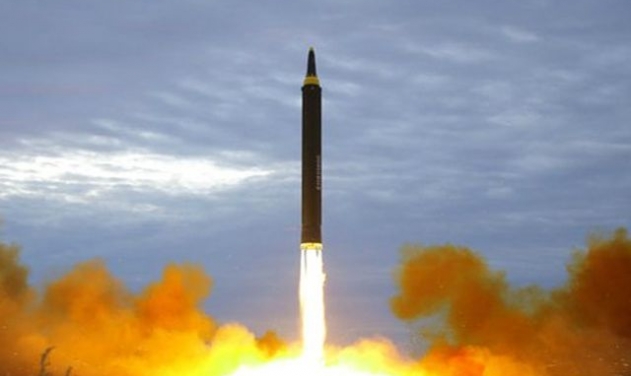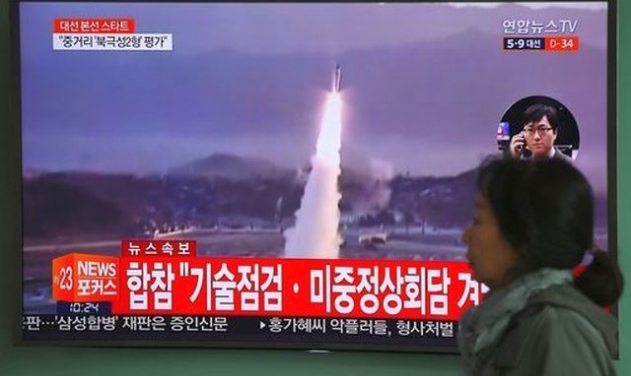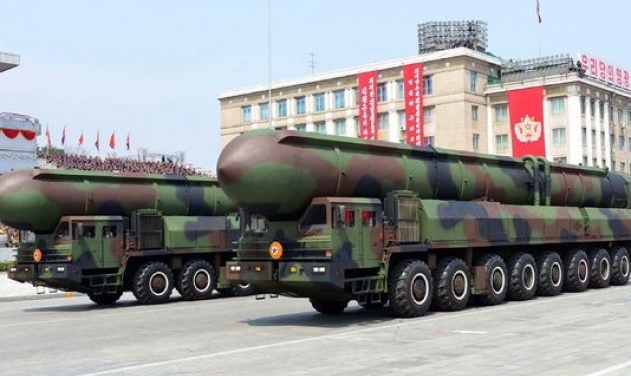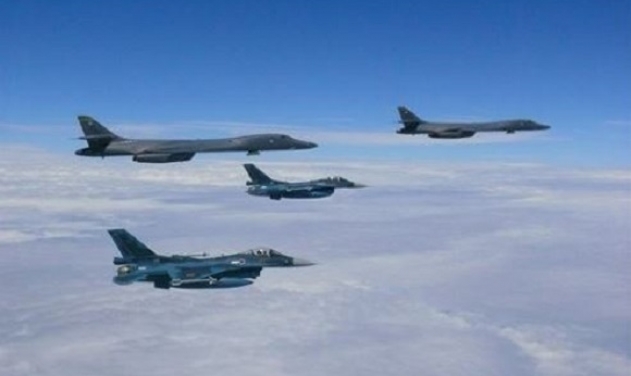North Korea Ignores Sanctions, US Pressure To Test Its Most Powerful Nuclear Weapon Ever
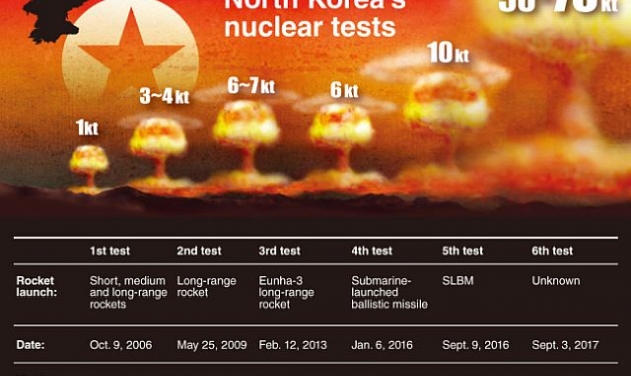
Shrugging off United Nations sanctions and muscle flexing by the United States, North Korea today conducted its most powerful nuclear test ever claiming it as a “complete success of a hydrogen warhead for an intercontinental ballistic missile (ICBM).”
Today’s test measured 6.3 magnitude by the United States Geological Survey compared to the fifth nuclear test, conducted on Sept. 9, 2016, which had created seismic waves measuring magnitude 5.3.
The test was preceded by the launch of an intermediate range ballistic missile (IRBM) earlier in the week which flew over Japan and fell in the Pacific Ocean traveling a distance of 2700 kilometers.
Following the test blast, North Korean state media claimed that the country is now capable of producing intercontinental ballistic missiles fitted with thermonuclear warheads.
Calling the explosion a hydrogen bomb, North Korean state media said, “the explosive power is adjustable from tens kiloton to hundreds kiloton, is a multi-functional thermonuclear nuke with great destructive power which can be detonated even at high altitudes for super-powerful EMP attack according to strategic goals,” it said.
“All components of the H-bomb were homemade and all the processes ranging from the production of weapons-grade nuclear materials to precision processing of components and their assembling were put on the Juche basis, thus enabling the country to produce powerful nuclear weapons as many as it wants,” the reports said.
North Korea’s nuclear test was detected by South Korean, Chinese and other authorities, at about 12:29 p.m.
According to Seoul’s Joint Chiefs of Staff office, seismic waves measuring magnitude 5.7 were detected from Punggye-ri, North Hamgyong Province in northeastern region of North Korea at 12:29 p.m. Punggye-ri is the site of Pyongyang’s previous nuclear tests.
Following North Korea’s missile launch in July, Moon ordered for more THAAD launchers to be deployed in Seongju, North Gyeongsang Province. Japan too has increased deployment of sea based and land based anti-missile systems.
